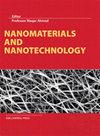Preparation of Eumelanin-Encapsulated Stereocomplex Polylactide Nano/Microparticles for Degradable Biocompatible UV-Shielding Products
IF 3.3
3区 材料科学
Q2 MATERIALS SCIENCE, MULTIDISCIPLINARY
引用次数: 0
Abstract
The role of eumelanin as a natural pigment in protecting human skin from ultraviolet (UV) light has drawn vast interest in the research and industrial community. Encapsulation of the compound by various shell materials has been extensively studied to optimize and prolong its shielding efficiency from UV penetration through the skin. Polylactide (PLA)-based copolymers have been widely used in the encapsulation of various active compounds due to their biocompatibility and biodegradability that facilitate sustained release of the active compounds. In this work, stereocomplex PLA (sc-PLA) derived from mixtures of poly(D-lactide-caprolactone-D-lactide), P(DLA-b-CL-b-DLA), a triblock copolymer with linear poly(L-lactide), and PLLA are employed to encapsulate eumelanin by an oil-in-water emulsion (O/W) technique. The effect of eumelanin distribution in PLA’s enantiomers and ultrasonication on the physicochemical properties, encapsulation efficiency, and release behavior of the nano/microparticles were evaluated. The potential application of the resulting particles for sunscreen products was assessed in terms of UV absorbance and in vitro sun protection factor (SPF). The nano/microparticles show a hollow spherical structure, whose size can be controlled by ultrasonication. The distribution of eumelanin and the ultrasonication process play a key role in the growth of sc-PLA and the crystalline structure of the particles. The highest encapsulation efficiency of 46.6% was achieved for sc-PLA2U particles. The high content of eumelanin and the hollow structure with a large surface area lead to improvement in the UV absorbance and sunscreen performance of the particles, as revealed by the increase in the SPF value from 9.7 to 16.5. The materials show high potential for various applications, especially in cosmetic and pharmaceutical fields, as UV-shielding products.真黑素包封立体配合物聚乳酸纳米/微粒的制备及其生物相容性紫外线屏蔽产品
真黑色素作为一种天然色素,在保护人类皮肤免受紫外线照射方面的作用引起了研究和工业界的广泛兴趣。通过各种外壳材料对该化合物的封装已经进行了广泛的研究,以优化和延长其对紫外线穿透皮肤的屏蔽效率。聚乳酸(PLA)基共聚物由于其生物相容性和生物降解性促进了活性化合物的持续释放,已被广泛用于各种活性化合物的封装。在本工作中,采用水包油乳液(O/W)技术,利用由聚(D-丙交酯-己内酯-D-丙交酯)、P(DLA-b-CL-b-DLA)、线性聚(L-丙交酯的三嵌段共聚物和PLLA的混合物衍生的立体复合物PLA(sc-PLA)包封真黑色素。评价了真黑色素在PLA对映体中的分布和超声处理对纳米/微米颗粒的物理化学性质、包封效率和释放行为的影响。根据紫外线吸收率和体外防晒系数(SPF)评估了所得颗粒在防晒产品中的潜在应用。纳米/微米颗粒显示出中空的球形结构,其尺寸可以通过超声控制。真黑色素的分布和超声处理过程对sc-PLA的生长和颗粒的晶体结构起着关键作用。sc-PLA2U颗粒的包封效率最高,达到46.6%。高含量的真黑色素和具有大表面积的中空结构导致颗粒的紫外线吸收和防晒性能的改善,如SPF值从9.7增加到16.5所示。这些材料在各种应用中显示出很高的潜力,特别是在化妆品和制药领域,作为紫外线屏蔽产品。
本文章由计算机程序翻译,如有差异,请以英文原文为准。
求助全文
约1分钟内获得全文
求助全文
来源期刊

Nanomaterials and Nanotechnology
NANOSCIENCE & NANOTECHNOLOGY-MATERIALS SCIENCE, MULTIDISCIPLINARY
CiteScore
7.20
自引率
21.60%
发文量
13
审稿时长
15 weeks
期刊介绍:
Nanomaterials and Nanotechnology is a JCR ranked, peer-reviewed open access journal addressed to a cross-disciplinary readership including scientists, researchers and professionals in both academia and industry with an interest in nanoscience and nanotechnology. The scope comprises (but is not limited to) the fundamental aspects and applications of nanoscience and nanotechnology
 求助内容:
求助内容: 应助结果提醒方式:
应助结果提醒方式:


